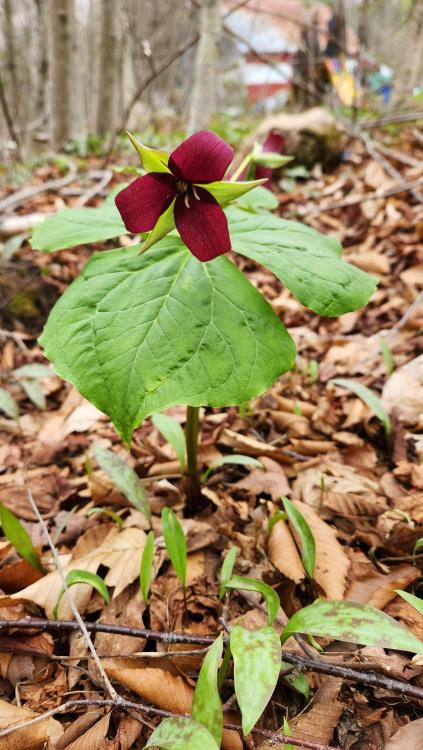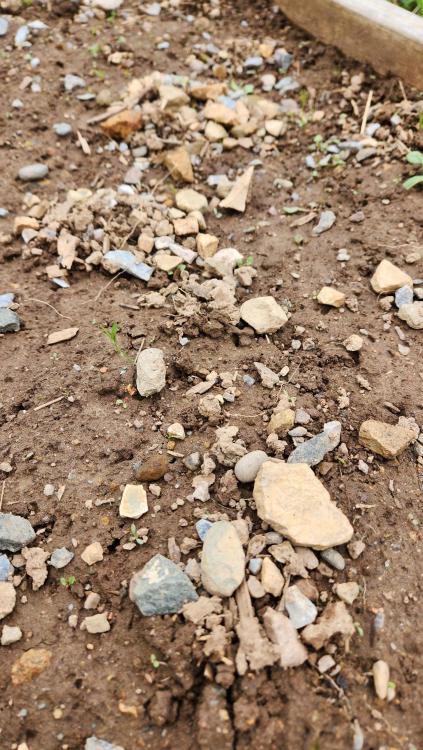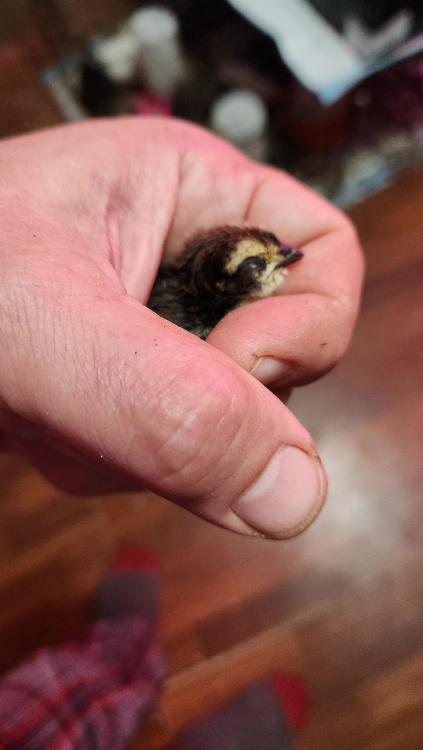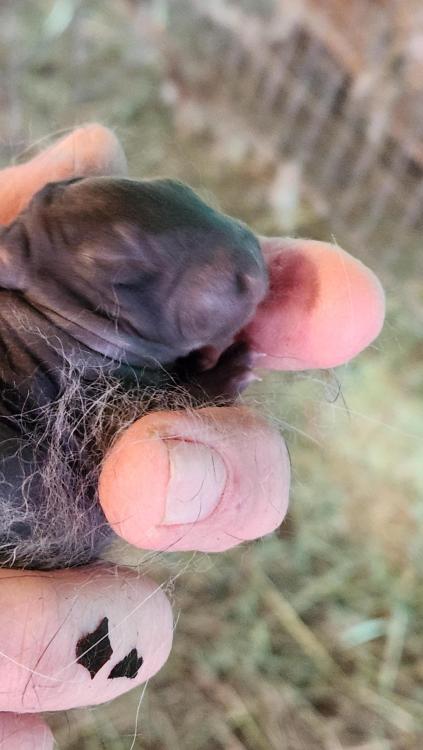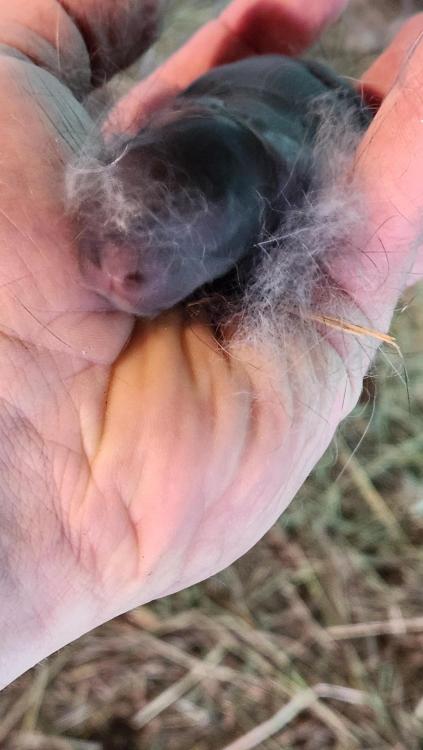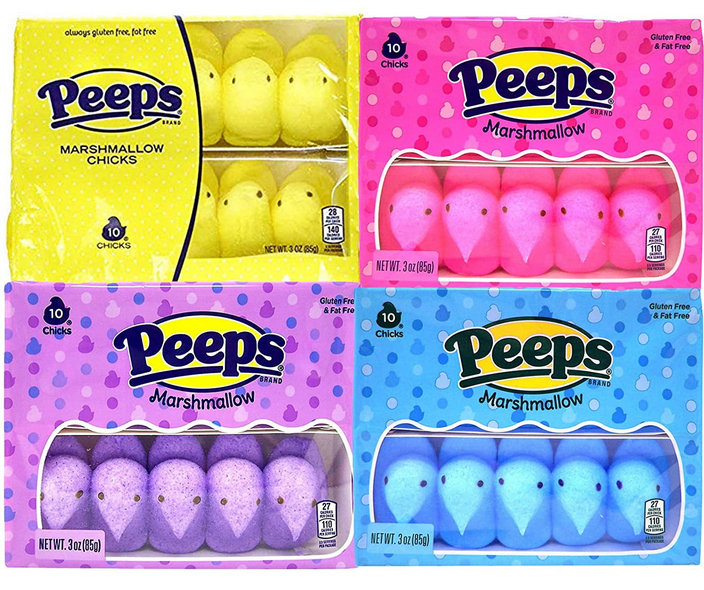-
Posts
6,304 -
Joined
-
Last visited
Content Type
Profiles
Forums
Store
Help Articles
Everything posted by chromedome
-
One of my uncles traveled frequently (he was a hospital administrator and his wife an anesthesiologist, so they were rather better-off than most of my family) and brought me back a souvenir piece of petrified wood from a trip there. I was fascinated by it, and very proud to own a piece. I was only 6 or 7 at the time, as I recall, and all about dinosaurs and fossils and suchlike.
-
Yeah, after a couple of years you'll have all the blossoms you need and still plenty of chives. Our grandkids pick them just because they think they're pretty in a vase, but they also like to pluck the little individual... blossoms? petals?... that make up the familiar purple ball (I'm not 100% clear on allium-flower anatomy) and nibble them. I put them on salads as a garnish sometimes, too.
-
In my experience, if you have one established clump of chives you won't need another. My original inch-diameter plug of chives from about three summers ago is now... I dunno, an easy 18 inches in diameter, and that's not counting the second clump that magically materialized nearby (has to be self-seeded, because I surely didn't plant more). It provides me with lavish quantities of chives all year, despite the grandkids having my blanket permission to enjoy a few whenever they choose. If the existing chive plant is near your berries as a bug deterrent, you can separate a few of the stems at the root and move them into your main herb bed. Within a couple of years that spot will be pretty big as well. Speaking of the grandkids, grandson was out helping me weed a couple of days ago when he spotted the curly kale that I'd overwintered. His eyes lit right up (as I've mentioned before, he's inordinately fond of kale) and he had to have a leaf right there and then. I promised him we'd have some with our dinner last night, so that's our first serving of veg from the garden for the season. It wasn't much, but it was at least symbolic.
-
After Glenn Frey died the town erected a statue of him on a corner in Winslow. The "standing on a" corner is now a tourist attraction, where people can come and take selfies with Frey, just as they do in Milwaukee with the "Bronze Fonze."
-
You may be familiar with the term "mondagreen," for a mis-heard or misunderstood song lyric. When I was a sprout, I thought they were singing "bob around," which (in my defense) certainly fits with the song's bouncy rhythm.
-
A pretty reliable rule of thumb is that the Canadian price on any given bottle of wine or whatever is roughly double the US price (that's dollar-for-dollar, not allowing for any other factors). As Elsie says, taxes on booze are high here but also the exchange rate has had the USD sitting at roughly 1.35-1.4 CAD for the past several months. That in and of itself makes for a big bump in the cost of a US-made wine on our side of the border. (shrug) It helps offset higher production costs up here and make our homegrown wines more competitive, I guess.
-
For our friends in Ontario, pumpkin seeds sold at a few very specific small outlets are being recalled due to salmonella. https://recalls-rappels.canada.ca/en/alert-recall/pumpkin-seeds-recalled-due-salmonella?utm_source=gc-notify&utm_medium=email&utm_content=en&utm_campaign=hc-sc-rsa-22-23
-
Yeah, that pretty much sums it up. Thought I'd share it here, in case anyone's interested. https://arstechnica.com/gadgets/2025/05/the-tinkerers-who-opened-up-a-fancy-coffee-maker-to-ai-brewing/
-
They're still very small, so I'm going to keep them in pots for another couple of years until they're bigger and sturdier (potting up regularly as they grow, of course). They'll need lots of sun but also some degree of shelter; in our climate they need a favorable microclimate so we'll need to work around that and also their mature size of 10-20 feet in height and diameter. If all goes as we hope and intend, we're going to build a second house on a back corner of the property. It'll be designed from ground up for accessibility and "aging in place," and it'll be set partially into the hillside. We think we may ultimately plant them so that they frame this new house from the front, because that spot would combine the desired shelter (from the hill and the woods) in one direction, and also give them the maximum quantity of sunlight.
-
A quick look at some of the early blossoms around our property. We have a whopping two red trilliums at the edge of the woods to the south of our house, but I'm happy to have any. They're very beautiful while they last. One of the previous owners planted lots of these little blue guys, which have happily naturalized and have now spread for some distance along the northern edge of the property. I'm fairly confident in calling one grape hyacinths, though they're on the small side. The other I believe to be Siberian squill or maybe striped squill, in the darker of its two colour schemes, though I'm open to correction on both. Some of you may remember me grumbling humorously that my garden's native soil might more accurately be described as "dirty gravel"? Well, this is what the surface of a bed looks like after a winter's precipitation. I reckon if I keep scooping this stuff from the top of my beds, eventually I'll have nice graveled paths between them. I've got most of my beds weeded now, with some help from our little grandson (age 7) who has learned that helping Papa means more time together kicking a soccer ball around. I've got a few early things planted over the past week: a row of peas, several of kale, and one of lettuces. Hoping to get other "as soon as the ground can be worked" seeds going, as soon as the bloody rain stops. My tomatoes, peppers and okra are doing fine in my closet, under a Sun Blaster tube, and should be ready to go in another couple of weeks when we get to "all danger of frost has passed." I don't recall if I'd mentioned it previously, but my daughter gifted me a pair of hardy magnolias as an early Father's Day present. They're the "Leonard Messel" hybrid, and I know for sure they'll survive and thrive in our climate because I've seen mature specimens in a few yards around our immediate vicinity. https://www.monrovia.com/leonard-messel-magnolia.html
-
I've run across the phrase "collegiate drones" in a novel, meaning young, idle college men loafing through their studies while trying to score with girls. For me it immediately brought to mind one specific prof I had, compared to whom Ben Stein's droning teacher from "Ferris Bueller" sounded like Robin Williams on a cocaine jag. Oddly he was very good 1-on-1, and I did end up learning a lot from him, but at the front of a lecture hall he was spectacularly dull.
-
1) Start list. 2) Misplace list. 3) Start new list, carefully attempting to remember as many things as possible from the original list. 4) Remember multiple things that hadn't made it onto the new list over the ensuing 2-3 days. Add them. 5) Find the original list. Add the items that I still hadn't remembered. 6) Go shopping. Remember there was a list as I'm halfway through the store (or realize I've mistakenly brought the original list, which by now contains just a fraction of the items on the current list). Attempt to recreate it again from memory. 7) Repeat. I've started using Google Keep on my phone for the shopping list(s) and to-do lists, which seems to be working reasonably well. I did try an actual shopping-list app several years ago, but it was so maddening to use that I abandoned it after just a couple of weeks.
-
We've been on the opposite side of that kind of confusion, in our way. The village I live in has a namesake just across the bay in Nova Scotia, and when we advertise our rabbits, quail, quail eggs etc for sale, we often have people responding to our ads in the mistaken belief that we're in the Nova Scotian town of the same name. Just a couple of weeks ago a sale for five young rabbits went south when the couple hopped into their car at 6:45 for our 7PM meeting, punched the address into their GPS, and said "Wait, what?" (It would be worse on FB Marketplace, because when we set a radius of 50 or 75km around our location, it shows us ads from across the bay in Nova Scotia's Annapolis Valley, and the reverse is also true.)
-
Organic Traditions brand jumbo pumpkin seeds are being recalled nationally due to salmonella. https://recalls-rappels.canada.ca/en/alert-recall/organic-traditions-brand-jumbo-pumpkin-seeds-recalled-due-salmonella?utm_source=gc-notify&utm_medium=email&utm_content=en&utm_campaign=hc-sc-rsa-22-23
-
I've mentioned that new-hatched quail are pretty tiny, right? This little guy is a day old. He somehow managed to find a way out of the "newborns" cage mid-morning, and was pretty hypothermic when I found him. After a half-hour of fast warming in my fist he perked up, and I got a bit of water and food into him before putting him back under the brooder with his siblings.
-
Another one that's Alberta only, for now, also for salmonella. This one is for Hong Kong brand shredded coconut. https://recalls-rappels.canada.ca/en/alert-recall/hong-kong-brand-shredded-coconut-recalled-due-salmonella?utm_source=gc-notify&utm_medium=email&utm_content=en&utm_campaign=hc-sc-rsa-22-23
-
Nothing much to report, this past while. We've only sold a handful of rabbits so far this year, well down from last year's numbers, though we've moved some quail and quail eggs. But, since I don't believe I've made a point of posting anything like this in the past, here are two pics of a newborn kit (age roughly 12 hours). It's something you wouldn't ordinarily get to see, unless you're raising rabbits yourself. They're pretty wiggly, so I needed to take 8 shots in order to get two that weren't blurred (much).
-
This one is Alberta only, at least for now. Al Kanater brand tahini's being recalled for salmonella. https://recalls-rappels.canada.ca/en/alert-recall/al-kanater-brand-tahini-recalled-due-salmonella-0?utm_source=gc-notify&utm_medium=email&utm_content=en&utm_campaign=hc-sc-rsa-22-23
-
As Douglas Adams put it, "Have you ever read the instructions on a pack of toothpicks?" Allergen-labeling law in the US (and Canada) boils down to "if it contains one of these major allergens,* it MUST be labeled accordingly." And sometimes you get these silly situations, like a jar of fish containing fish or Costco recalling butter because it's missing the "contains milk" statement. But there absolutely are people capable of not understanding that a "sprat" is a fish, or that anchovies in Worcestershire sauce or Caesar dressing mean you can't serve it to someone with a seafood allergy. It's not so much the people with allergies (because they'll usually know), it's the dim but well-meaning friends, neighbours, co-workers etc. Not to mention the idiots who think "I'm so tired of his 'allergy' bullshit, I'll feed him some deliberately so show him it's all in his head." And yes, sadly, that happens far too often (in my limited circle of acquaintance, I can think of three incidents just within the past few years). Similarly, some chains won't accept a food product for sale unless it has a freshness date printed on it, hence the various wags on social media joking about their salt being past its date. That one, I'll grant you, is pretty silly. *Eight in the US, ten in Canada
-
-
I'll be heading down to Nova Scotia today, for my monthly visit, and taking along 5 rabbits to be delivered to 2 different buyers along the way, as well as 4 dozen quail eggs for a third buyer. It seems there may be some potential to generate a modest side income out of this, if we choose to pursue it. Before packing up to go I've had to take 20-odd minutes to pipe the filling into (cough) 8 dozen deviled quail eggs. My GF's cousin celebrates her 60th tomorrow, and those will go on the trays for the party. Now I have to go hard on the packing and a few last-minute tasks (refilling the hay, chicken feed and quail feed, loading firewood for the next several days, etc).
-
-











